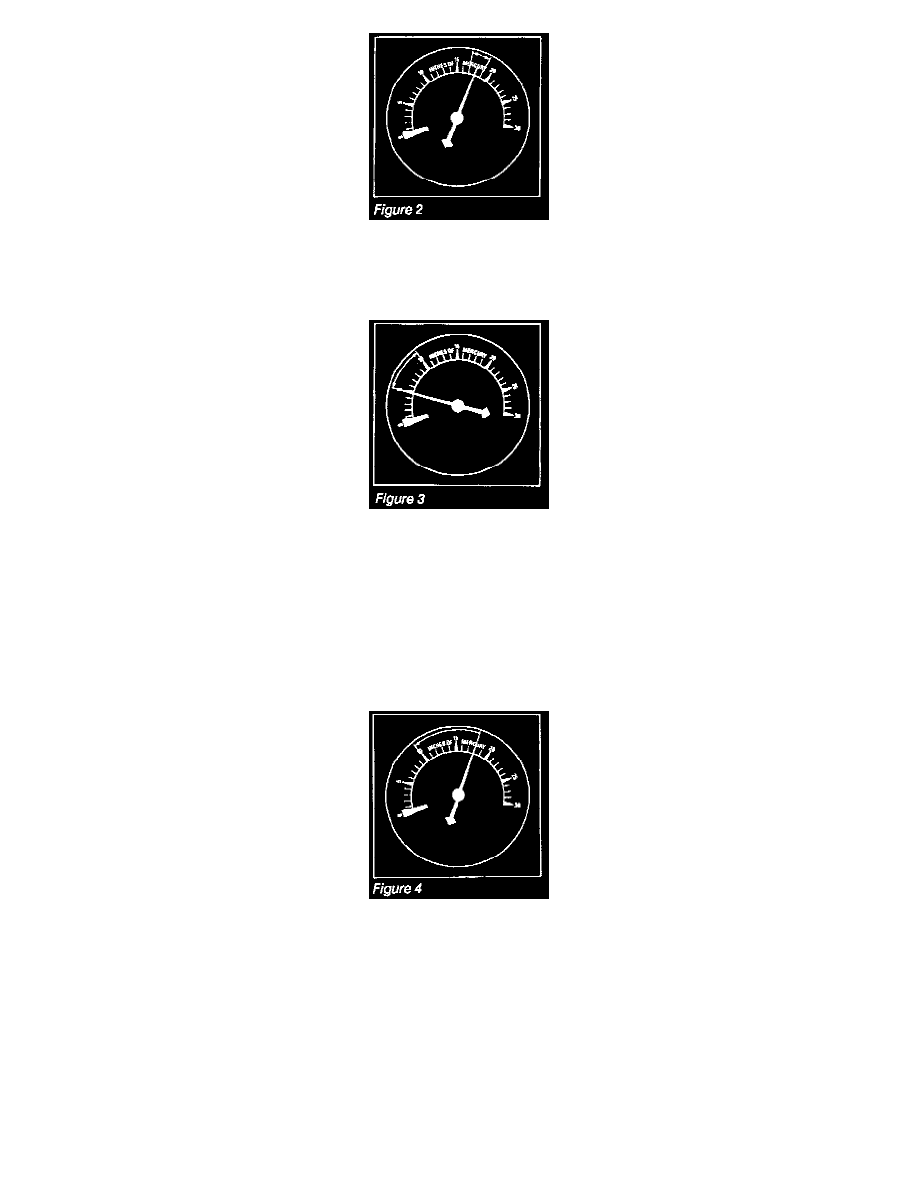XT-6 2WD L6-2.7L SOHC (1989)

With the engine idling, continued fluctuation of 1 to 2 inches may indicate an ignition problem. Check the spark plugs, spark plug gap, primary ignition
circuit, high tension cables, distributor cap or ignition coil. Fluctuations of 3 to 4 inches may be sticking valves. See figure 2.
INTAKE SYSTEM LEAKAGE, VALVE TIMING, OR LOW COMPRESSION
A vacuum reading at idle much lower than normal can indicate leakage through intake manifold gaskets, manifold-to-carburetor gaskets, vacuum brakes
or the vacuum modulator. Low readings could also be very late valve timing or worn piston rings. See figure 3.
EXHAUST BACK PRESSURE
Starting with the engine at idle, slowly increase engine speed to 3000 RPM, engine vacuum should be equal to or higher than idle vacuum at 3000 RPM.
If vacuum decreases at higher engine RPM's, an excessive exhaust back pressure is probably present.
CYLINDER HEAD GASKET LEAKAGE
With the engine Idling, the vacuum gauge pointer will drop sharply, every time the leak occurs. The drop will be from the steady reading shown by the
pointer to a reading of 10" to 12" Hg or less. If the leak Is between two cylinders, the drop will be much greater. You can determine the location of the
leak by compression tests. See figure 4.
FUEL CONTROL SYSTEM TROUBLES
All other systems in an engine must be functioning properly before you check the fuel control system as a cause for poor engine performance. If the
pointer has a slow floating motion of 4 to 5 inches - you should check the fuel control.
BULLETIN RECAP
^
Engine problems can affect transmission performance.
